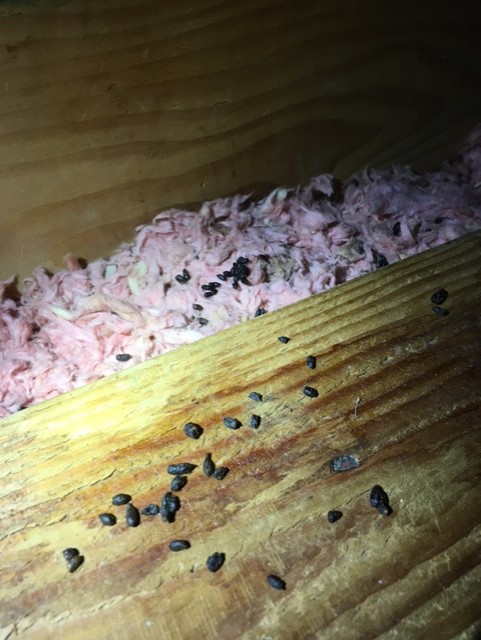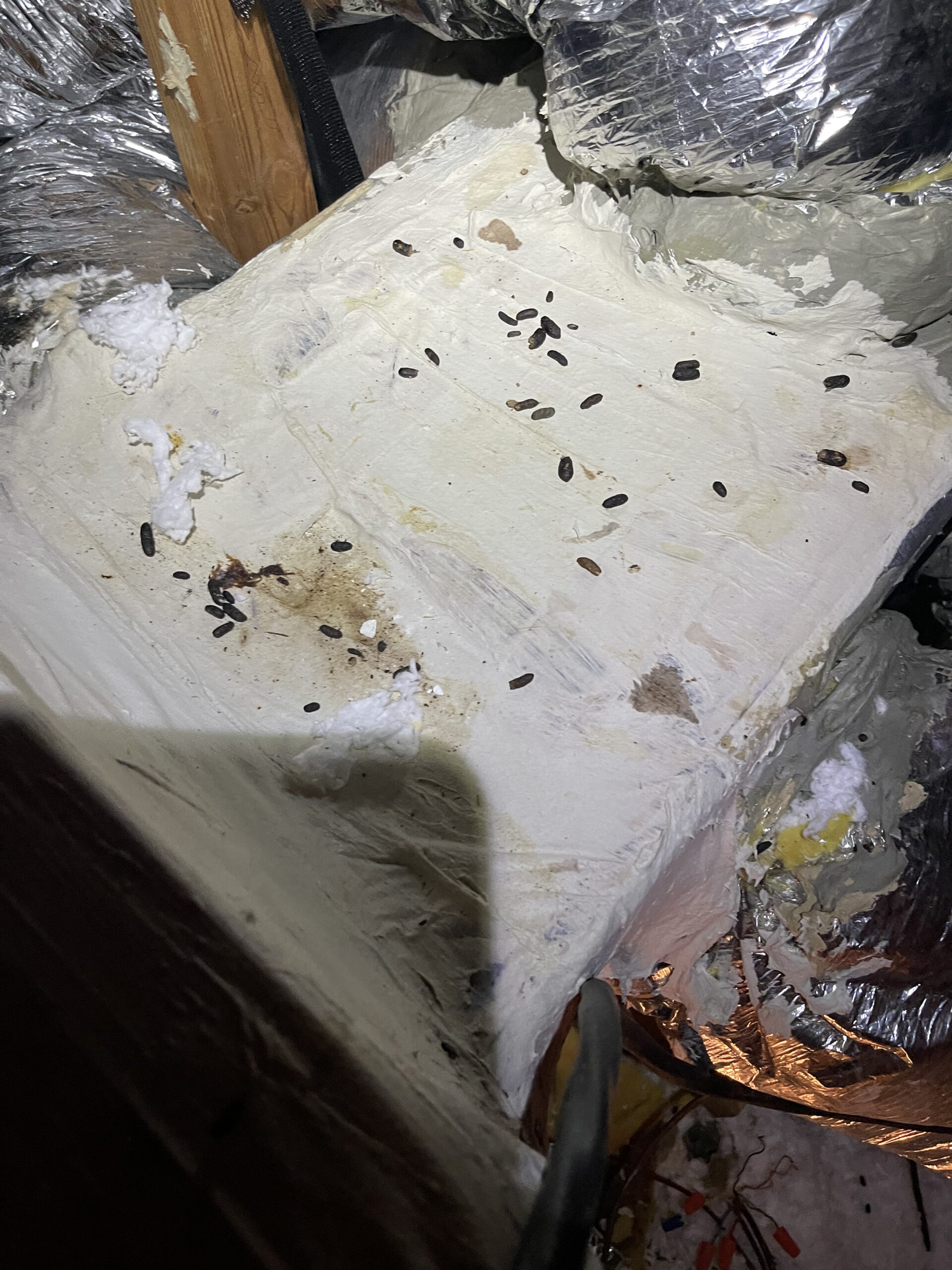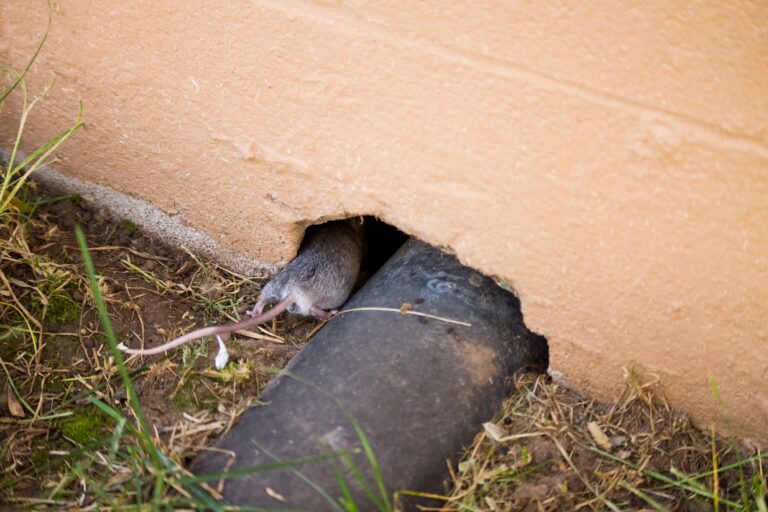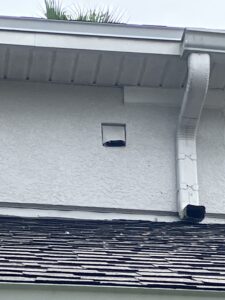Rodents like rats, mice, and squirrels are some of the most common pests homeowners deal with in their attic space. These pests are also some of the most destructive. Recognizing the signs of rodent activity in the attic early can mitigate their damage.
Are you worried about the possibility of rodent damage in your attic? At Trutech, we understand the need to move quickly for rodent control. The first step is understanding what pest infestation you’re dealing with.
We’ll cover the common signs of rodent damage in attics, the types of rodents that typically cause attic damage, methods for identifying rodent entry points, assessing the extent of the damage, repairing it, and implementing effective rodent control strategies.
Rodent Damage in the Attic
If you suspect rodents are in your attic space, it’s vital to identify the signs of their presence. Recognizing these indicators early allows you to take action and prevent further damage.
Frayed Electrical Wires
One of the most dangerous signs of rodent activity is chewed electrical wire. Rodents like rats and mice gnaw on objects to trim their teeth, leading to exposed wiring and a significant fire hazard. If you find chewed wires or cables in your attic, it’s crucial to have them repaired or replaced by a professional.
Rodent Droppings
All three rodents will avoid human interactions. So actually seeing a rodent is unlikely. However, their droppings are of the most obvious pieces of physical evidence of a rodent infestation.
Mice, rats, and squirrels have similar-looking feces. They are dark brown or black capsule-shaped forms that can vary in tone depending upon the diet as well as the age of the dropping. Older droppings fade in color.

Squirrel Droppings
Squirrel poop is expect anything between 3/8 to 1 inch, with 1/8 inch diameter and distinguished by its varied coloration. Squirrel scat can often present itself in hues, including beige, light brown, dark brown, green, and black. Typically, the scat groupings are more spread out

Mouse Droppings
Mouse droppings are approximately 1/4″ (0.635 cm). Mouse poop is also tapered or pointed on the edges. Lastly, mice will disperse their poop in different areas of the attic.

Rat Droppings
rat droppings are significantly larger at 1/2″ – 3/4″ of an inch, depending on the species. Rat poop is typically concentrated in one area, as they tend to designate an area for the bathroom.
Rodent Nests
Rodents create nests from shredded paper, cardboard, fabric, or insulation. House mice will build nests near food sources and next to heat. A squirrel nest looks like an oversized clump of twigs and leaves. A rat nest may resemble a messy ball-shaped structure or a heap of various materials.
Damaged Insulation
Damaged insulation is another common consequence of rodent infestations. Rodents burrow and create pathways in the insulation, compromising its effectiveness and potentially providing access to other pests. Mice, rats, and squirrels will contaminate insulation.
Identify Rodent Entry Points in the Attic

Identifying rodent entry points is a critical step in preventing and addressing rodent damage in your attic. Rodents can squeeze through tiny holes, so a thorough inspection is necessary.
Start by looking for chew marks on the roof, fascia, soffits, and eaves. Rodents’ strong teeth can gnaw through wood and plastic. Chew marks are clear indicators of rodent activity.
Gaps around vents and pipes are common entry points for rodents. These openings are often overlooked but can provide easy access to your attic. Inspect vents and pipes carefully and seal any gaps or cracks you find.
Rodents are persistent and can find creative ways to enter your attic. By inspecting for gaps and openings, looking for chew marks, and sealing gaps around vents and pipes, you can effectively identify and prevent rodent damage in your attic.
Rat Entry Points from Jacksonville, FL





Squirrel Holes
Gnaw Marks
Types of Rodents that Cause Damage in the Attic
Understanding the specific type of rodent infestation is key to addressing the problem effectively.
Rats, mice, and squirrels all damage your attic in similar ways. All three rodents are incessant gnawers and will gnaw on anything in your attic. The droppings from the three pests look similar and contaminate the area.
Here are three common types of rodents known for causing attic damage:
Rats and holes in the insulation: Norway rats will burrow through your insulation. If you find tiny holes throughout your insulation, you might have a Norway rat infestation.
Mice and their nesting behaviors: Mice are smaller and can easily access attics through tiny openings. Inside, they create nests from shredded insulation, paper, and fabric, damaging the attic’s insulation and posing health risks.
Squirrels and their food caches: Squirrels are agile climbers, making attics an attractive nesting location. They store food caches like nuts, acorns, and seeds. While squirrels don’t typically chew on wires like rats and mice, they can still cause damage by tearing insulation, creating entry points for other pests, and leaving droppings that may carry diseases.
Assessing the Extent of Rodent Damage in Attic
To accurately determine the extent of rodent damage in your attic, focus on several key areas. By examining damaged insulation and wiring, checking for torn air ducts, and identifying signs of structural damage, you can assess the problem and take appropriate action.
First, look for damaged insulation and wiring. Rodents often chew on insulation materials and electrical wires, causing significant damage. Insulation may appear torn, shredded, or displaced, while wiring may have visible bite marks or be completely severed. Addressing these issues promptly is essential, as damaged insulation can affect energy efficiency, and exposed wiring poses a fire hazard.
Another common issue caused by rodents, particularly Norway rats, is the creation of burrows through insulation. These pests are known for burrowing and nesting in various materials, including insulation. Their burrowing activity can compromise the integrity of the insulation, reducing its effectiveness and potentially creating pathways for drafts and pests to enter your home.
Next, inspect the air ducts in your attic. Rodents can tear through air ducts, creating openings that allow them to move freely throughout your home. Check for any signs of torn or chewed ducts, as well as evidence of rodent activity near the openings. Repairing or replacing damaged air ducts will help restore proper airflow and prevent rodents from accessing other areas of your house.
Finally, look for signs of structural damage caused by rodents. They can gnaw on wooden beams, support structures, and other building materials, weakening the attic’s overall integrity. Look for chewed or scratched surfaces and any noticeable changes in the structure. Promptly addressing structural damage is essential to maintain your home’s safety and stability.
If you’re unsure about the extent of the damage, consult with a professional pest control company like Trutech. Our experts have the knowledge and experience to thoroughly assess the situation and provide effective solutions tailored to your specific needs.
Trutech Repairs Rodent Damage in Attic
When dealing with rodent damage in your attic, taking prompt action is crucial to prevent further issues. Here are some key steps technicians at Trutech consider:
Replace contaminated insulation or opt for full attic restoration: Rodents contaminate the insulation with droppings, urine, and nesting materials. This compromises the insulation’s effectiveness and poses health risks. Consider replacing the contaminated insulation or opting for a full attic restoration, depending on the damage’s extent. TruTech specializes in attic restoration services, ensuring a clean and safe environment.
Repair and seal entry holes: To prevent future rodent infestations, it’s crucial to identify and repair any entry holes rodents use to access your attic. Trutech provides expert inspection and sealing services, ensuring all potential entry points are properly addressed and secured.
Trutech Rodent Control in Attic
Identifying rodent damage in your attic and taking immediate action is vital to prevent further infestation and potential health risks. Trutech offers effective solutions to control and manage rodent populations in your attic, ensuring a safe and healthy living environment.
One key method we employ is professional rodent trapping. Our experienced technicians use humane trapping techniques to safely capture and remove rodents from your attic. By controlling the population through trapping, we can help prevent further damage and reduce disease transmission risks.
In addition to trapping, rodent exclusions are crucial for long-term control. TruTech uses proven techniques to seal off entry points and prevent rodents from accessing your attic. By identifying and sealing these openings, we can effectively prevent future infestations and minimize the chances of rodent damage.
Recurring maintenance is also essential in controlling the rodent population on your property. Our technicians install bait stations strategically around your property to attract and eliminate rodents. These stations are designed to be safe and effective, ensuring that rodents are kept at bay and reducing the risk of damage to your attic and property.
At Trutech, we understand the importance of prompt and efficient rodent control in your attic. With our expertise and advanced techniques, we can help you identify rodent damage, control the population, and prevent future infestations. Trust us to provide reliable and effective solutions for a rodent-free attic.











